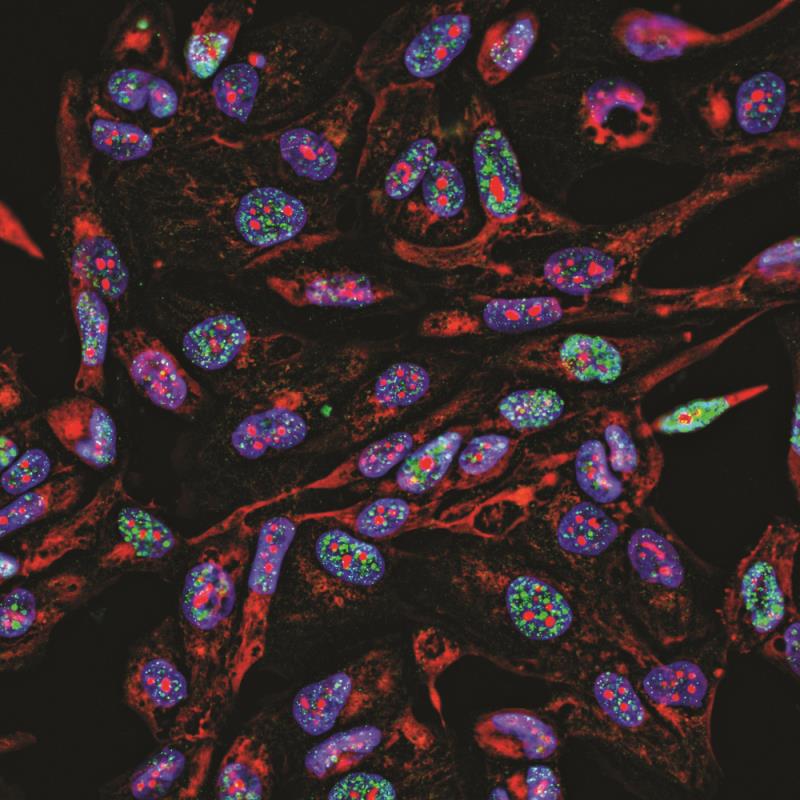Cancer treatment personalization with biomarkers: What lies ahead?





Identification of biomarkers is fundamental in cancer treatment and drug development as it is key to matching the right drug to the right patient, according to Dr Molly Li from the Chinese University of Hong Kong (CUHK), who spoke at the European Society for Medical Oncology Targeted Anticancer Therapies Asia Congress (ESMO TAT Asia) 2025.
In retrospect: Learning from biomarkers in NSCLC
“Biomarker identification could determine the fate of a drug,” highlighted Li, citing gefitinib as an example. This first US FDA–approved tyrosine kinase inhibitor (TKI) for advanced non-small-cell lung cancer (NSCLC) treatment initially showed variable responses in an unselected patient population. It was only later (>5 years after approval) in the IPASS trial that researchers identified EGFR gene mutations as the predictive biomarker for gefitinib’s efficacy. This critical finding saved a drug from its near demise and transformed it into a foundation of precision medicine. [Lancet 2008;372:1809-1818; N Engl J Med 2009;361:947-957]
“This led to the era of personalized medicine, spurring the development of subsequent targeted therapies which have transformed the treatment landscape of NSCLC,” said Li. These include therapies targeting ALK, ROS1, BRAF and HER2 oncogenes besides EGFR, as well as PD-L1 – the only validated but imperfect immuno-oncological (IO) biomarker for guiding immunotherapy in NSCLC patients, including those with wild-type oncogenes. [J Clin Oncol 2019;37:2518-2527; J Clin Oncol 2021;39:2339-2349]
“Apart from predictive biomarkers, as clinicians, we also have a responsibility to refine and improve the use of diagnostic biomarkers,” noted Li. “Adoption of easily accessible biomarkers is very important in improving testing uptake as well as drug access.”
Li cited how liquid (plasma) biopsy, a noninvasive, convenient and easily repeatable method of testing for EGFRT790M mutations, was found to be comparable to the less accessible tissue-based assay, leading to the current use of liquid biopsy as a tool in aiding treatment selection. Another example is the initial reliance on gold-standard, labour-intensive and expensive fluorescence in situ hybridization (FISH) for ALK mutation testing, and later adoption of faster, more accessible and affordable immunohistochemistry (IHC) for screening. [J Clin Oncol 2016;34:3375-3382; N Engl J Med 2014;371:2167-2177; N Engl J Med 2020;383:2018-2029]
Prognostic biomarkers to guide treatment escalation and de-escalation
“Prognostic biomarkers may aid prediction of survival outcomes and guide decision-making in treatment escalation and de-escalation,” stated Li.
For instance, circulating tumour (ct)DNA clearance indicative of pathological complete response (pCR) was associated with improved 5-year survival rates vs lack of such response among patients treated with a short course of neoadjuvant nivolumab + chemotherapy in the CheckMate 816 trial. “Long-term survival was excellent among patients with pCR after neoadjuvant immunochemotherapy. As such, adjuvant immunotherapy may be arguable in this context [in treatment of resectable NSCLC without actionable genomic alterations],” suggested Li. [N Engl J Med 2025;393:741-752]
Furthermore, a secondary analysis of the MARIPOSA trial indicated that patients with advanced EGFR-positive NSCLC without high-risk features (Ex19del and L858R ctDNA) who had no liver or brain metastases or TP53 mutation were unlikely to benefit from intensified first-line therapy. [Ann Oncol 2024;35:805-816] “Hence, such patients should be spared from the toxicity of combination treatment,” said Li.
Looking ahead: Challenges and opportunities
“With emerging treatment strategies such as cellular therapy, vaccines, T-cell engagers and targeted therapy combinations, there is an increasing need for new biomarkers, not only for predicting efficacy or recurrence, but also for identifying patients suitable for novel therapies or treatment intensification, as well as those who are likely to experience specific treatment-related toxicity such as cytokine release syndrome,” noted Li. “Biomarkers could also be used to screen for cancer and future risk.”
“However, biomarkers beyond actionable driver oncogenes are highly complex. Hence, composite biomarkers are likely required for establishing new predictive biomarkers,” he added.
Establishing blood tumour mutational burden (TMB) as an immunotherapy biomarker, for example, has been challenging. While there is substantial correlation between TMB and responses to immune checkpoint inhibitors (ICIs), low TMB does not preclude ICI treatment response. The many factors contributing to the complexity include the multifaceted interactions between tumour cells, immune cells and the tumour microenvironment; TMB reflecting the quantity but not quality and clonality of the antigen; lack of harmonization of TMB assessment methodologies; and the variation of appropriate cut-off for “high TMB” across different tumour types. [Cancer Cell 2021;39:154-173]
Ongoing biomarker studies: What’s promising?
“The technology for ctDNA as well as ctRNA detection is evolving and maturing into higher accuracy in prediction of recurrence rate,” stated Li. “Our collaborative study with a group in mainland China has found AI radiomics to be promising thus far in predicting pathological response.” [Nat Med 2025;31:70-76; Zhou, et al, unpublished data]
Antibody-drug conjugates (ADCs) have demonstrated promising efficacy in some advanced-stage cancers. This novel treatment strategy also calls for predictive biomarkers. “While no correlation has been found between ADC efficacy and simple protein expression by semiquantitative IHC methods, AI-powered quantitative continuous scoring [QCS] of normalized membrane ratio [NMR; membrane vs cytoplasm ratio] measuring, for example, TROP2 expression of tumour cells, has recently been discovered to aid stratification of patients who might benefit more from TROP2-directed therapy,” highlighted Li. [Ann Oncol 2024;35:437-447; Garassino, et al, WCLC 2024, abstract PL02.11]
“At CUHK, we are currently exploring the use of 3D IHC to assess antigen heterogeneity in predicting ADC efficacy. We have found that 3D IHC outperforms 2D IHC in terms of reflecting antigen heterogeneity,” Li reported.
“This is an exciting era because we can leverage on advances in AI, deep learning, big data and dynamic biomarkers [such as blood and stool] to decipher complex relationships in novel biomarker development. To develop new and better biomarkers, researchers need to collaborate with big data scientists/bioinformaticians, establish data-sharing platforms, and prospectively collect plasma and tissue samples,” Li concluded.